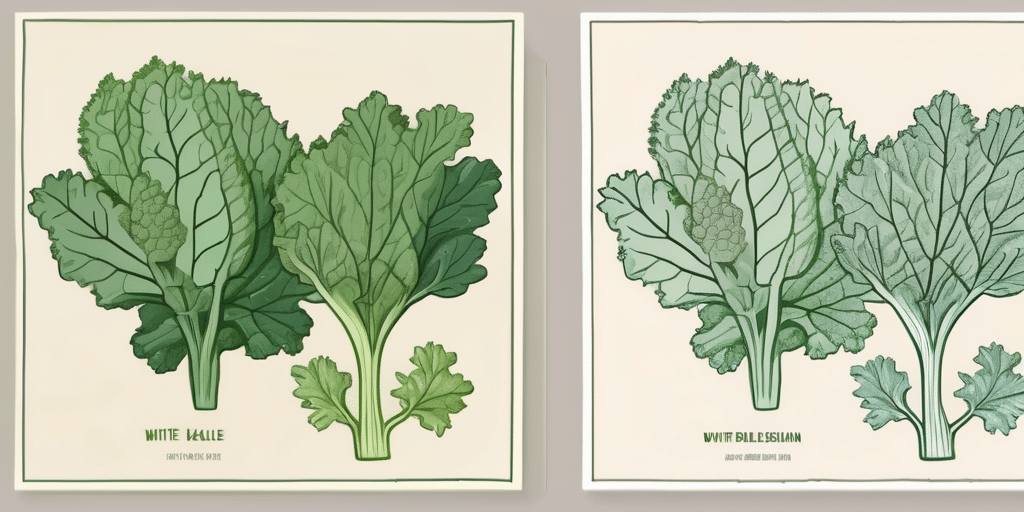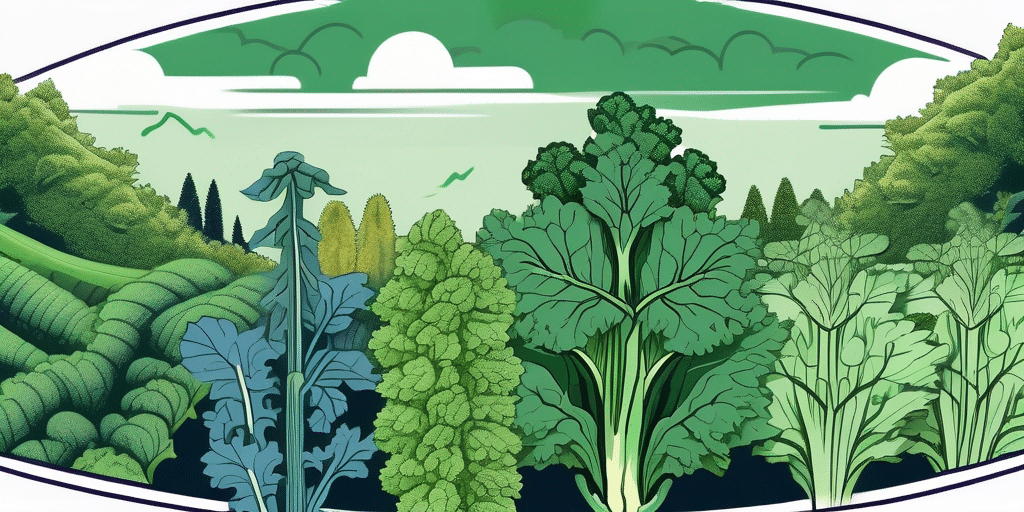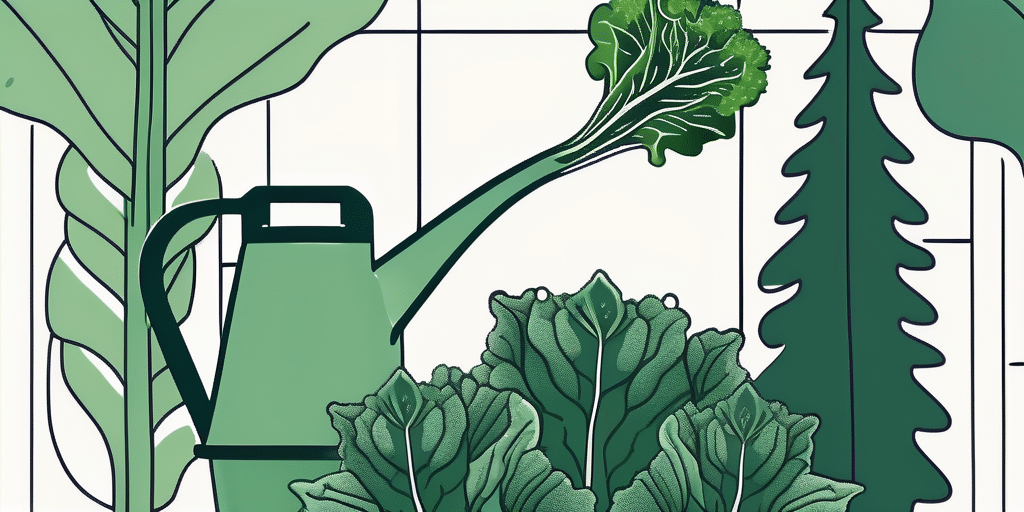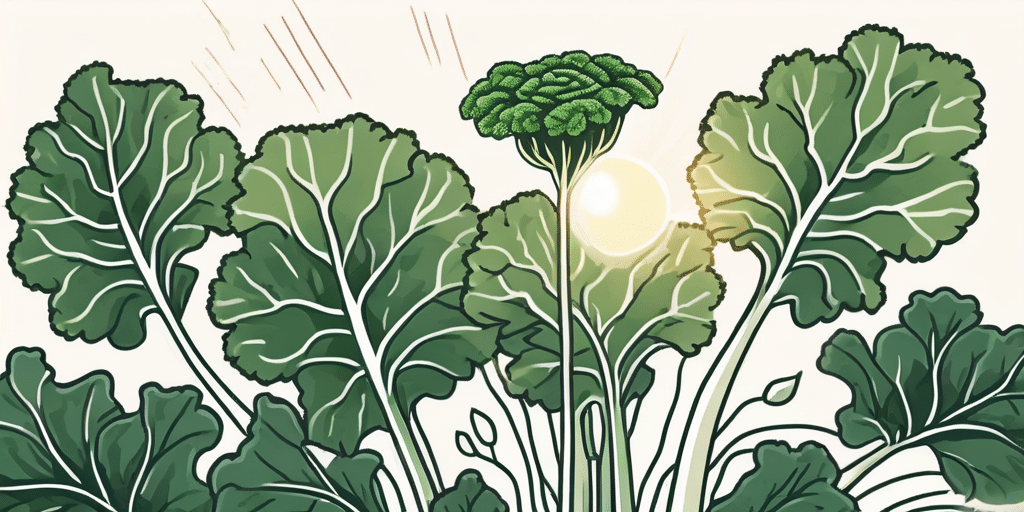Red Ursa Kale is a flavorful and nutritious leafy green that is perfect for growing in Oregon’s unique climate. Whether you are a seasoned gardener or a beginner, this article will provide you with all the information you need to successfully plant and grow Red Ursa Kale in Oregon.
Climate & Hardiness Zones in Oregon
Before diving into the specifics of growing Red Ursa Kale, it is essential to understand the climate and hardiness zones in Oregon. The state is known for its diverse climate, ranging from the cool, wet coastal regions to the dry, hot inland areas. This variation in climate plays a crucial role in determining the optimal planting and growing conditions for Red Ursa Kale.
Oregon is commonly divided into four hardiness zones: Western Lowlands, Western Highlands, Eastern Lowlands, and Eastern Highlands. Each zone has its own unique characteristics, such as average temperature and precipitation levels. It is important to check which zone you are in to ensure the best chances of success when growing Red Ursa Kale.
The Western Lowlands of Oregon, including cities like Portland and Eugene, are characterized by mild, wet winters and warm, dry summers. This maritime climate is ideal for a variety of crops, including leafy greens like Red Ursa Kale. The consistent moisture and moderate temperatures create a hospitable environment for plant growth throughout the year.
On the other hand, the Eastern Highlands of Oregon, encompassing areas like Bend and Ontario, experience a more extreme climate with cold winters and hot summers. Gardeners in this region may need to take extra precautions to protect their Red Ursa Kale from temperature fluctuations and water stress. Mulching and proper irrigation techniques can help mitigate these challenges and promote healthy plant development.
When to Plant Red Ursa Kale in Oregon
Knowing the right time to plant Red Ursa Kale is essential for achieving a bountiful harvest. In Oregon, the best time to plant this leafy green is during the spring or fall season. These seasons provide the optimal balance of temperature and moisture for seed germination and plant growth.
If you are planting Red Ursa Kale from seeds, it is recommended to start indoors about 6 to 8 weeks before the last frost date. This will give the plants a head start and ensure they are strong and healthy when transplanted outdoors.
For those who prefer to start with seedlings, it is best to wait until the danger of frost has passed and the soil temperature has warmed up. In Oregon, this typically happens around late April or early May for spring planting and late August or early September for fall planting.
Red Ursa Kale is a nutrient-dense leafy green that thrives in cool weather, making it an excellent choice for Oregon’s climate. This variety of kale is known for its deep red leaves, which are packed with antioxidants and vitamins. Planting Red Ursa Kale in well-draining soil enriched with organic matter will help promote healthy growth and vibrant color in the leaves.
When planting Red Ursa Kale, spacing is crucial to allow the plants to receive adequate sunlight and airflow. Aim to space the kale plants about 12 to 18 inches apart to prevent overcrowding and promote proper development. Additionally, applying a layer of mulch around the base of the plants can help retain moisture in the soil and suppress weed growth.
When to Harvest or Pick Red Ursa Kale in Oregon
Once you have successfully planted your Red Ursa Kale in the fertile soils of Oregon, the next step is to know when to harvest or pick the leaves. Red Ursa Kale, with its vibrant red and green leaves, thrives in the temperate climate of the Pacific Northwest, offering a bountiful harvest for those who tend to it with care.
The younger leaves of Red Ursa Kale are not only visually appealing with their deep hues but are also generally more tender and mild in flavor, making them ideal for salads or quick sautés. These young leaves can be harvested when they reach a length of 4 to 6 inches, showcasing their peak freshness and tenderness. By simply cutting the outer leaves at an angle, you encourage the inner ones to continue growing and flourishing.
If you are a fan of a stronger, bolder flavor profile, exercising patience will reward you with mature Red Ursa Kale leaves. These leaves, typically measuring 8 to 10 inches in length, boast a robust taste that adds depth to soups, stews, and stir-fries. It is crucial to harvest these leaves before they overripen, as they may become tough or develop a slightly bitter taste, detracting from the overall culinary experience.
Remember that regular harvesting not only provides you with a continuous supply of fresh Red Ursa Kale but also promotes new growth, ensuring that your plants remain healthy and productive throughout the growing season. Embrace the art of harvesting at the right moment to savor the full potential of your Red Ursa Kale bounty in Oregon’s fertile lands.
Frequently Asked Questions
Here are some common questions that gardeners in Oregon have about growing Red Ursa Kale:
- Can Red Ursa Kale tolerate frost?
Yes, Red Ursa Kale is a cold-hardy variety and can tolerate light frosts. However, it is best to protect the plants during harsh frosts by covering them with a frost cloth or plant cover.
- Does Red Ursa Kale require full sun?
While Red Ursa Kale prefers full sun for optimal growth, it can tolerate partial shade. If you have limited sunlight in your garden, you can still grow Red Ursa Kale with relative success.
- How often should I water my Red Ursa Kale plants?
Red Ursa Kale requires regular watering to thrive, especially during hot and dry periods. Aim to keep the soil consistently moist but not waterlogged. Water deeply at least once a week, or more frequently if the weather is particularly dry.
- Are there any pests or diseases that commonly affect Red Ursa Kale?
Red Ursa Kale is generally resistant to common pests and diseases. However, keep an eye out for cabbage loopers and aphids. If you notice any signs of infestation, promptly remove the affected leaves or treat with a suitable organic pesticide.
Now that you have all the information you need, it’s time to roll up your sleeves and start growing Red Ursa Kale in your Oregon garden. With proper care and attention, you can enjoy a bountiful harvest of this delicious and nutritious leafy green throughout the growing season!
When it comes to harvesting Red Ursa Kale, you have a few options. You can choose to harvest the entire plant at once, cutting it off at the base. Alternatively, you can practice “cut and come again” harvesting, where you selectively remove the outer leaves as needed, allowing the inner leaves to continue growing.
Red Ursa Kale is known for its vibrant red-purple leaves, which not only add a pop of color to your garden but also provide a rich source of nutrients. This variety is packed with vitamins A, C, and K, as well as minerals like calcium and iron. Incorporating Red Ursa Kale into your diet can help support a healthy immune system and promote strong bones.
Join Our Gardening Community
Ready to take your Red Ursa Kale and Oregon garden to the next level? Subscribe for free to How to Grow Everything and learn how to build the garden of your dreams! Receive personalized gardening advice and information tailored to your specific location, grow zone, experience level, and interests. Enjoy the best gardening tips, special offers, and deals delivered straight to your inbox, without any spam or tricks. It’s 100% free, from our family to yours. Don’t miss out on our extensive library of free growing and gardening articles—join our community today!






